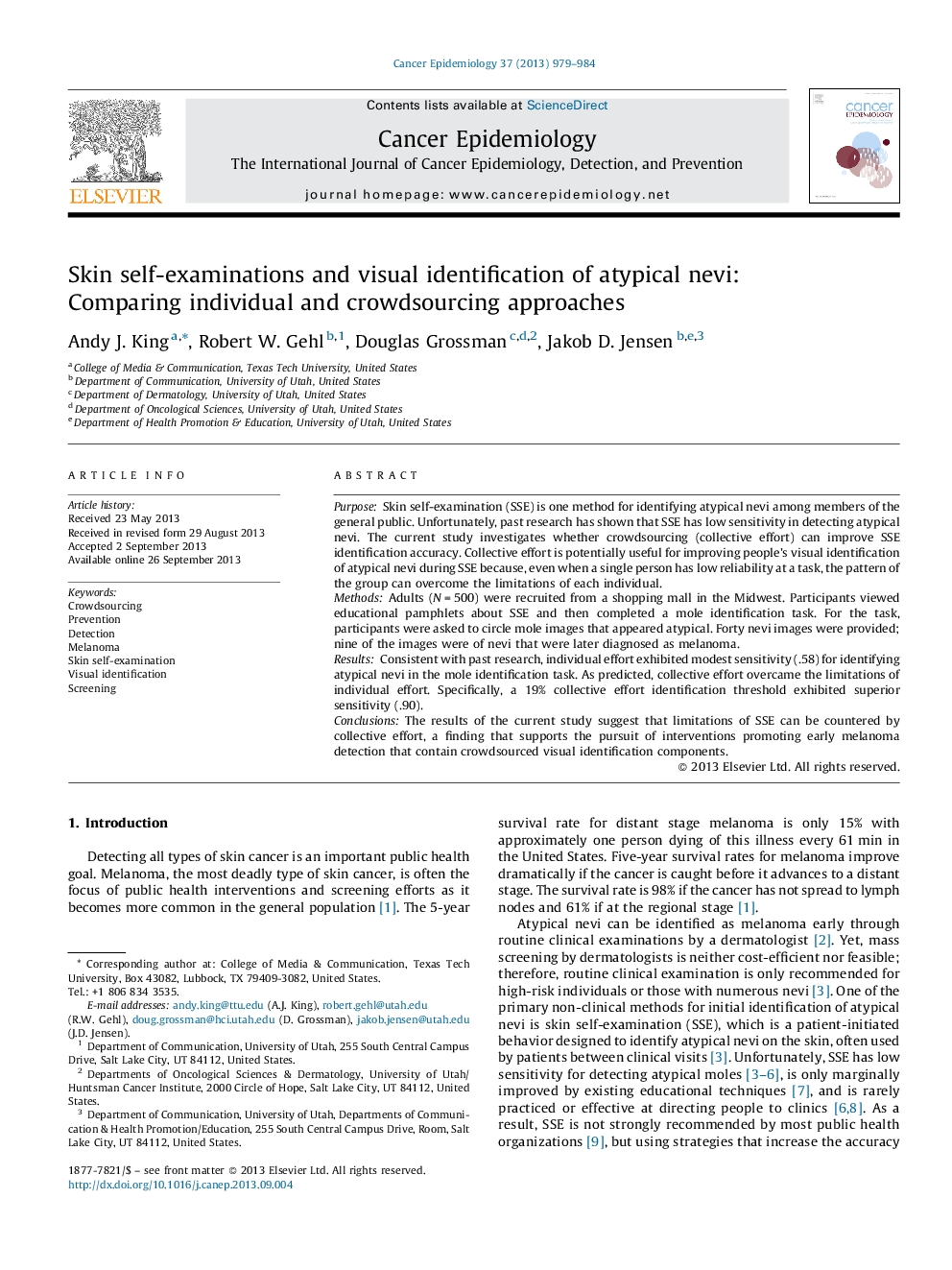| Article ID | Journal | Published Year | Pages | File Type |
|---|---|---|---|---|
| 2108868 | Cancer Epidemiology | 2013 | 6 Pages |
PurposeSkin self-examination (SSE) is one method for identifying atypical nevi among members of the general public. Unfortunately, past research has shown that SSE has low sensitivity in detecting atypical nevi. The current study investigates whether crowdsourcing (collective effort) can improve SSE identification accuracy. Collective effort is potentially useful for improving people's visual identification of atypical nevi during SSE because, even when a single person has low reliability at a task, the pattern of the group can overcome the limitations of each individual.MethodsAdults (N = 500) were recruited from a shopping mall in the Midwest. Participants viewed educational pamphlets about SSE and then completed a mole identification task. For the task, participants were asked to circle mole images that appeared atypical. Forty nevi images were provided; nine of the images were of nevi that were later diagnosed as melanoma.ResultsConsistent with past research, individual effort exhibited modest sensitivity (.58) for identifying atypical nevi in the mole identification task. As predicted, collective effort overcame the limitations of individual effort. Specifically, a 19% collective effort identification threshold exhibited superior sensitivity (.90).ConclusionsThe results of the current study suggest that limitations of SSE can be countered by collective effort, a finding that supports the pursuit of interventions promoting early melanoma detection that contain crowdsourced visual identification components.
